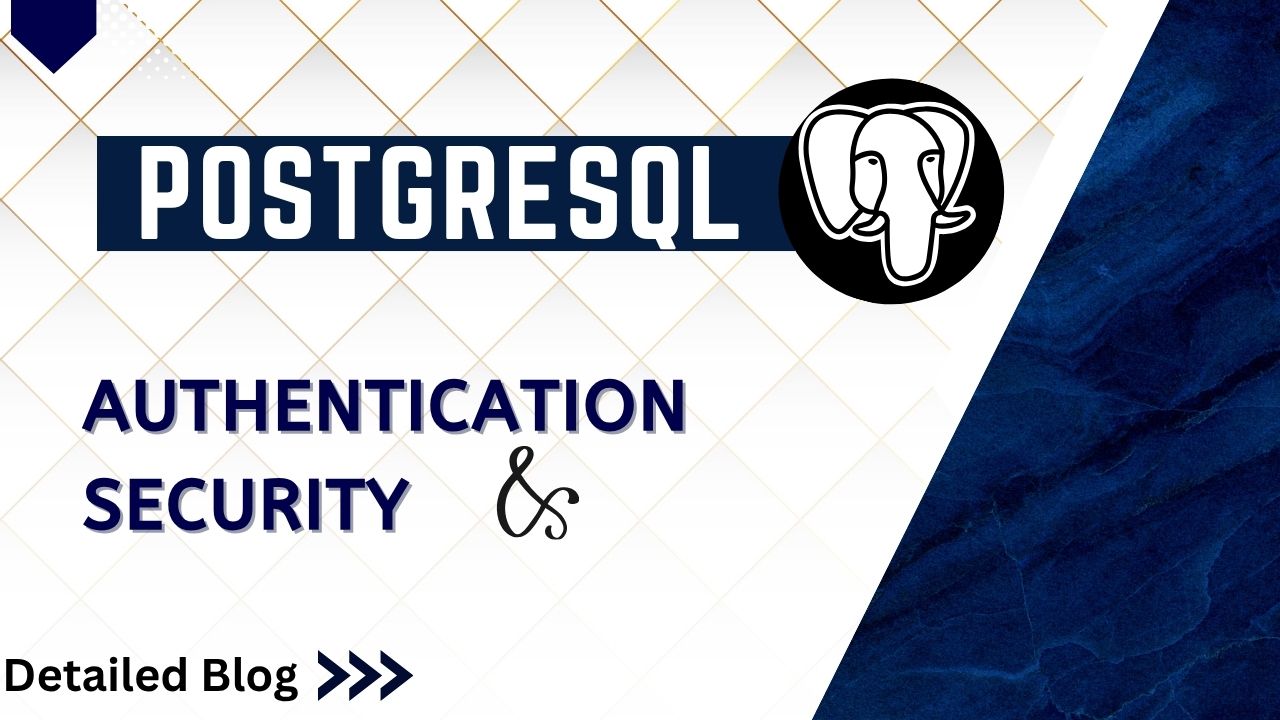PostgreSQL Authentication and Security
PostgreSQL Authentication and Security — Explained
Security in PostgreSQL starts at the connection level. Whether you’re managing small projects or enterprise databases, understanding how PostgreSQL handles authentication and access is crucial to keeping your data safe.
If you’re looking to learn PostgreSQL deeply, mastering its security model should be your top priority.
1 . Authentication in PostgreSQL
Authentication verifies who is trying to connect to the database.
It is configured in the pg_hba.conf (Host-Based Authentication) file — PostgreSQL’s main access control file.
Common Authentication Methods:
-
scram-sha-256→ Secure, password-based authentication (recommended overmd5) -
peer→ Local authentication using OS user identity -
LDAP/Kerberos→ Enterprise-grade Single Sign-On (SSO) -
trust→ Allows passwordless access (for testing only)
Example configuration:
💡 Always use scram-sha-256 in production for stronger encryption.
2 . Access Control and Roles
PostgreSQL uses roles and privileges to control what users can do inside the database.
You can assign roles, group them, and grant permissions at the database, schema, or table level.
Example:
✅ Follow the principle of least privilege — grant only what’s necessary.
3 . Security Best Practices
Enhancing PostgreSQL security is not only about authentication — it’s also about access control, auditing, and encryption.
Here are a few key practices every DBA should follow:
🔹 Use scram-sha-256 instead of md5
🔹 Restrict access to trusted IPs only
🔹 Enable SSL/TLS connections for encryption
🔹 Regularly audit roles and privileges
🔹 Keep your pg_hba.conf and password policies updated
🔹 Separate users for application, reporting, and administration
4 . Why PostgreSQL Security Matters
In modern data-driven systems, breaches can cost millions. PostgreSQL provides a robust authentication system with enterprise-grade features like GSSAPI, SSPI, and Kerberos to ensure secure and compliant database operations.
By learning PostgreSQL security, you not only protect your data but also gain control over how users and applications interact with it.
Conclusion
PostgreSQL’s authentication and access control framework ensures your database remains secure, reliable, and compliant.
Implementing the right methods and following best practices is essential for any DBA, developer, or architect who wants to learn PostgreSQL and manage it confidently.
🚀 Ready to dive deeper?
Start your journey to Learn PostgreSQL
At Learnomate Technologies, we make sure you not only understand such cutting-edge features but also know how to implement them in real-world projects. Whether you’re a beginner looking to break into the database world or an experienced professional upgrading your skillset—we’ve got your back with the most practical, hands-on training in Oracle technologies.








Let’s keep learning, exploring, and growing together. Because staying curious is the first step to staying ahead.
Happy learning!
ANKUSH
with real-world database administration, performance tuning, and security tips — only at Learnomate Technologies.


